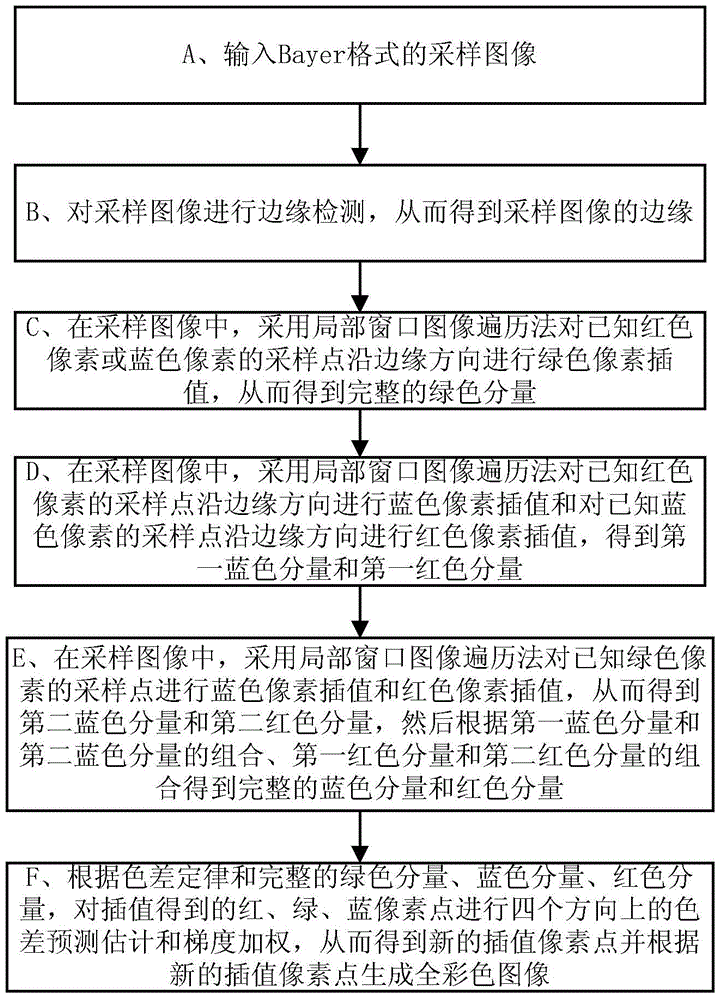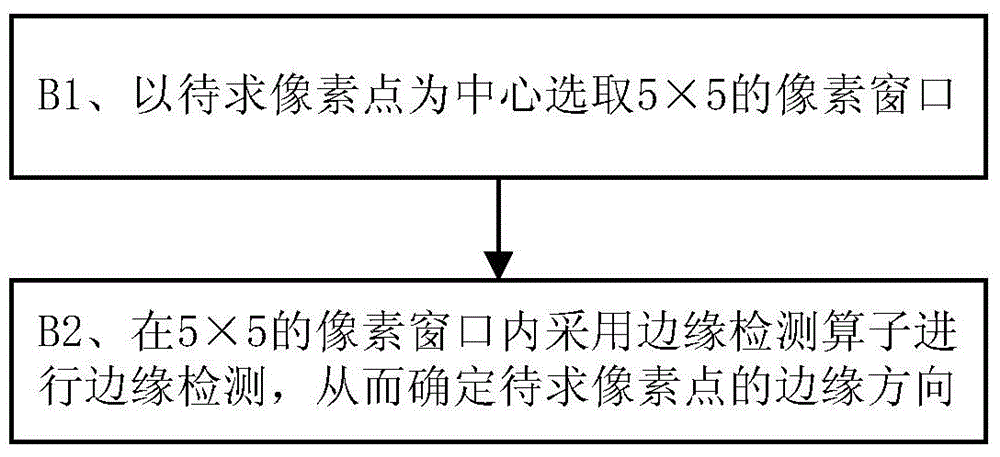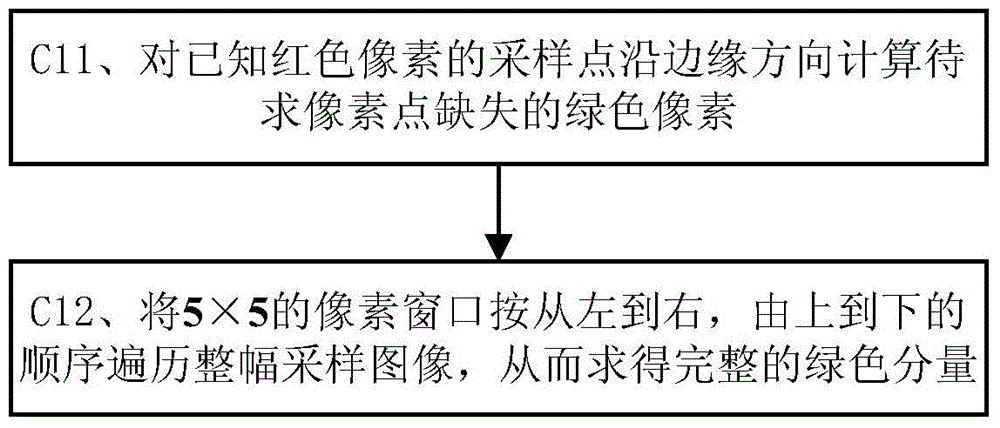Color interpolation method based on edge detection
An edge detection and color interpolation technology, applied in the field of image processing, can solve the problems of lowering the quality of collected images, low accuracy, and poor real-time performance
- Summary
- Abstract
- Description
- Claims
- Application Information
AI Technical Summary
Problems solved by technology
Method used
Image
Examples
Embodiment 1
[0166] Input an image sampled in Bayer format arranged in accordance with "RG-GB", such as Figure 7 Shown.
[0167] The process of calculating the green pixel from the sampling point of the known red pixel R or blue pixel B is:
[0168] (1) Select a 5×5 pixel window with the pixel to be determined as the center, and detect the image edge in the 5×5 window.
[0169] Such as Figure 8 As shown, taking the 5×5 window of the central sampling point R(3,3) as an example, the edge detection operator for interpolating the green component is:
[0170] Hg(3,3)=|G(3,2)-G(3,4)|+|2R(3,3)-R(3,1)-R(3,5)|,
[0171] Vg(3,3)=|G(2,3)-G(4,3)|+|2R(3,3)-R(1,3)-R(5,3)|
[0172] When Hg(3,3)Vg(3,3), the center point is determined R(3,3) is at the vertical edge; when Hg(3,3)=Vg(3,3), it is determined that the center point R(3,3) is not at the edge position.
[0173] Such as Picture 9 As shown, taking the 5×5 window of the central sampling point B(4,4) as an example, the edge detection operator for interpolatin...
Embodiment 2
[0194] The specific process of finding the blue pixel B for the sampling point of the known red pixel R and finding the red pixel R for the sampling point of the known blue pixel B is:
[0195] (1) Select a 5×5 pixel window with the pixel to be determined as the center, and detect the image edge in the 5×5 window.
[0196] Such as Figure 8 As shown, taking the 5×5 window of the central sampling point R(3,3) as an example, the edge detection operator for interpolating the blue component is:
[0197] Hb(3,3)=|B(2,2)-B(4,4)|+|2g(3,3)-g(2,2)-g(4,4)|,
[0198] Vb(3,3)=|B(2,4)-B(4,2)|+|2g(4,4)-g(2,4)-g(4,2)|
[0199] Among them, B (2, 4) is a pixel with a known sampling point, and g (3, 3) is a pixel obtained by interpolation.
[0200] When Hb(3,3)Vb(3,3) ), it is determined that the center point R(3,3) is at the edge of the lower left and upper right diagonal; when Hb(3,3)=Vb(3,3), it is determined that the center point R(3,3) is not at edge.
[0201] Such as Picture 9 As shown, the 5×5 wi...
Embodiment 3
[0223] The specific process of calculating the red pixel R and the blue pixel B for the sampling points of the known green pixel G is:
[0224] (1) Select a 5×5 pixel window with the pixel to be determined as the center, and calculate the missing red component R or blue component B of the pixel to be determined in the 5×5 window.
[0225] Such as Picture 10 As shown, taking the 5×5 window of the central sampling point G(3,4) as an example, interpolating the red and blue pixels, then:
[0226] r ( 3,4 ) = R ( 3,3 ) + R ( 3,5 ) 2 + 2 g ( 3,4 ) - g ( 3,3 ) - g ( 3,5 ) 2
[0227] b ( 3,4 ) = B ( 2,4 ) + B ( 4 , 4 ) 2 + 2 g ( 3,4 ) - g ( 2,4 ) - g ( 4,4 ) 2
[0228] Such as Picture 11 As shown, taking the 5×5 window of the central sampling point G(4,3) as an example, interpolating the red and blue pixels, then: ...
PUM
 Login to View More
Login to View More Abstract
Description
Claims
Application Information
 Login to View More
Login to View More - R&D
- Intellectual Property
- Life Sciences
- Materials
- Tech Scout
- Unparalleled Data Quality
- Higher Quality Content
- 60% Fewer Hallucinations
Browse by: Latest US Patents, China's latest patents, Technical Efficacy Thesaurus, Application Domain, Technology Topic, Popular Technical Reports.
© 2025 PatSnap. All rights reserved.Legal|Privacy policy|Modern Slavery Act Transparency Statement|Sitemap|About US| Contact US: help@patsnap.com



